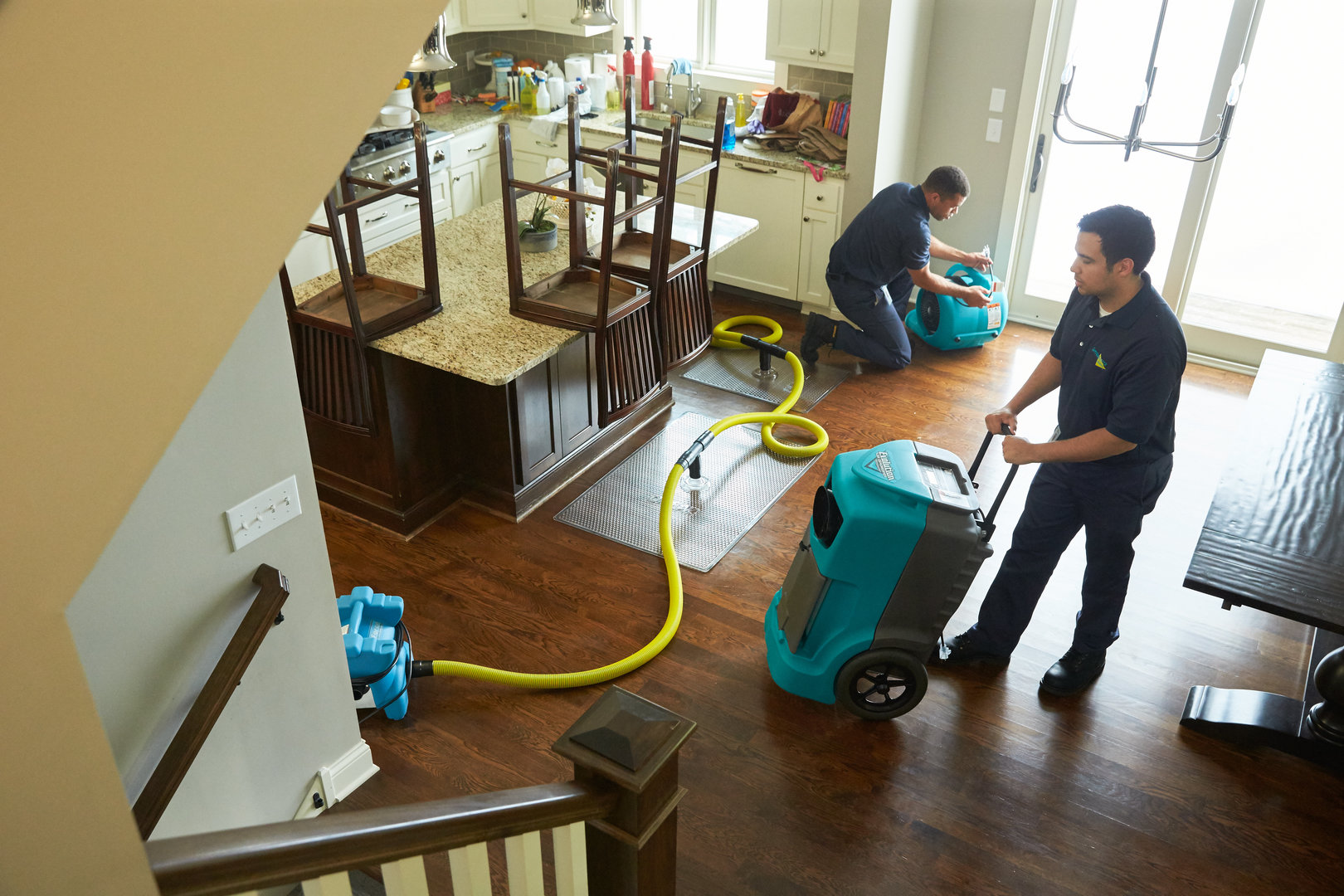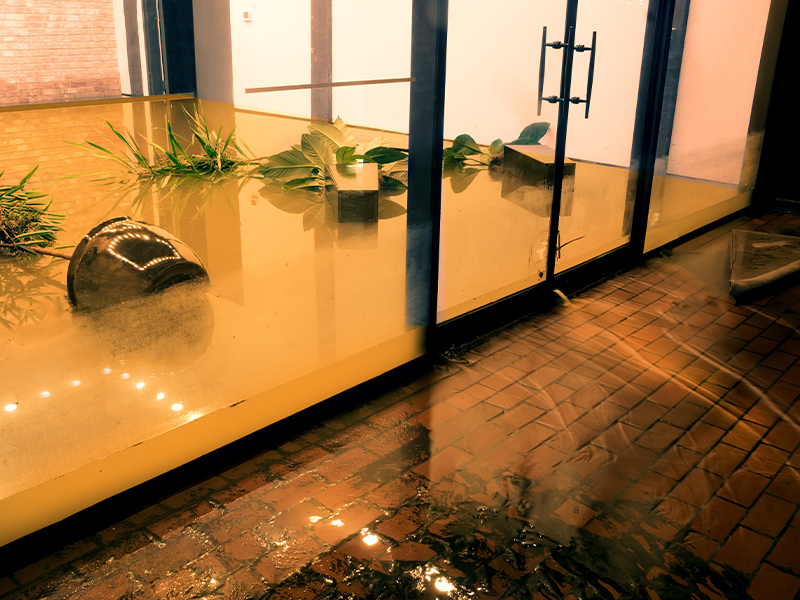Your Trusted Home Inspector Philadelphia: Insights for Confident Residential Property Ownership
Your Trusted Home Inspector Philadelphia: Insights for Confident Residential Property Ownership
Blog Article
Emergency Situation Water Damages Reconstruction: Swift Response to Reduce More Damages
Water damage can strike unexpectedly and leave damaging results on companies and homes. When confronted with such a situation, a quick action is vital to decrease more damages and protect against possible wellness dangers. Yet exactly what does emergency situation water damages reconstruction require? In this conversation, we will certainly look into the significance of immediate activity, the analysis procedure, the steps included in water removal and drying, mold avoidance and remediation, and eventually, the reconstruction of the damaged area. By comprehending the seriousness and detailed nature of this process, you will obtain valuable understandings right into exactly how professionals take on emergency situation water damage, guaranteeing a swift and efficient feedback.
Value of Swift Reaction
Swift action is of utmost significance in water damage restoration to decrease additional damage and mitigate possible dangers. When water damage takes place, whether as a result of a burst pipe, an all-natural catastrophe, or any various other unpredicted occasion, time is important. The longer water beings in a structure, the more damages it can create. This is why it is important to act rapidly and efficiently to get rid of the water and start the restoration procedure.
One of the major factors quick action is crucial in water damage repair is to protect against the development of mold and mildew. Mold not just creates more damages to the structure of the building but likewise presents wellness risks to occupants.
Water damages can be ravaging, particularly when it affects individual things of financial or nostalgic value. Acting promptly permits specialists to examine the damage and implement appropriate reconstruction strategies to recover as much as possible.
Evaluating the Extent of Damages

During the assessment, restoration professionals extensively check out the damaged location to determine visible indicators of damages, such as water spots, warped products, and mold and mildew development. They likewise use specialized equipment to find concealed damage, such as dampness meters and thermal imaging cams. This detailed assessment allows them to properly figure out the extent of the damages and develop a tailored reconstruction strategy.
Evaluating the level of water damage is vital due to the fact that it assists professionals prioritize their initiatives. They can identify locations that need immediate focus, such as standing water removal and drying, to avoid more damage and decrease the risk of mold and mildew growth. They can likewise determine the locations that require repair services or replacement, making sure that no damage goes undetected or untreated.

Water Extraction and Drying Out Process
The water extraction and drying out process is an essential action in water damages remediation, as it entails the elimination of excess water and the complete drying of the damaged location to avoid further damages and alleviate the danger of mold development. After analyzing the level of the water damages, the next step is to extract the water from the damaged location. This is typically done making use of customized tools such as dehumidifiers, vacuums, and pumps. These tools are designed to successfully and properly get rid of water from numerous surface areas, including floorings, carpetings, and wall surfaces.
This step is necessary in preventing secondary damages, such as structural damage and the development of mold and mold. The drying procedure might take several days, depending on the level of the water damages and the products entailed.
It is vital to make certain that the affected area is here are the findings entirely dry prior to waging any type of repair services or restoration. Failing to extensively dry out the location can cause lasting concerns, consisting of damaged frameworks, mildewy smells, and the growth of mold and mildew. Expert water damage remediation firms utilize wetness discovery tools to make sure that the afflicted area is entirely dry before continuing to the next action.
Mold Avoidance and Remediation
Reliable mold avoidance and remediation are crucial in water damages restoration to make sure the safety and honesty of the affected location. mold remediation philadelphia. When water damages occurs, whether from a burst pipeline, flooding, or a leaky roofing, it creates a suitable environment for mold development. Mold and mildew can start to establish within 24 to 2 days after water damage, and if left unattended, it can spread quickly and trigger serious health and wellness threats
To prevent mold growth, it is necessary to resolve water damage quickly. The very first step is to fix the resource and recognize of the water breach.
In instances where mold and mildew development has actually currently happened, removal is needed to get rid of the mold and prevent its return. This involves the careful elimination and disposal of damaged products, such as drywall or rug, to guarantee that all traces of mold are eliminated. It is very important to note that mold removal need to be lugged out by experts who have the necessary training and equipment to securely take care of and get rid of mold.
Restoring the Affected Location

Firstly, it is crucial to thoroughly dry the area to avoid any type of additional damage and to hinder the development of mold and mildew and mildew. This may include using specialized drying out devices, such as dehumidifiers and industrial-grade followers, to eliminate all wetness from the afflicted surfaces.
When the area is totally dry, the reconstruction procedure can begin. This may involve changing or fixing damaged structural elements, such as floor covering, drywall, or ceiling ceramic tiles. It is very important to resolve any kind of underlying concerns that might have triggered the water damage, such as leaking pipes or malfunctioning plumbing, to stop future incidents.
Furthermore, recovering the damaged location may also include repainting wall surfaces, changing harmed fixtures, and thoroughly cleaning and disinfecting the room. This makes sure that not only is the area structurally sound, yet it is likewise aesthetically pleasing and secure for occupancy.
Conclusion
In verdict, quick response is critical in decreasing additional damages triggered by water emergency situations. Examining the extent of damages enables efficient water removal and drying procedures to be executed. In addition, mold avoidance and remediation are necessary in restoring the afflicted location. In general, prompt action and complete restoration procedures are key to alleviating the adverse impacts of water damages.
Swift action is of utmost importance in water damages restoration to lessen more damages and mitigate prospective threats.During the evaluation, reconstruction professionals thoroughly analyze the damaged area to identify visible indicators of damages, such as water spots, distorted products, and mold and mildew development.The water removal and drying process is a critical action in water damages reconstruction, as it entails the elimination of excess water and the thorough drying of the affected location to protect against more damages and minimize the threat of mold and mildew development. After examining the degree of the water damage, the next step is to remove the water from the damaged location.Efficient mold prevention and remediation are critical in he has a good point water damages repair to make sure the security and integrity of the affected location.
Report this page